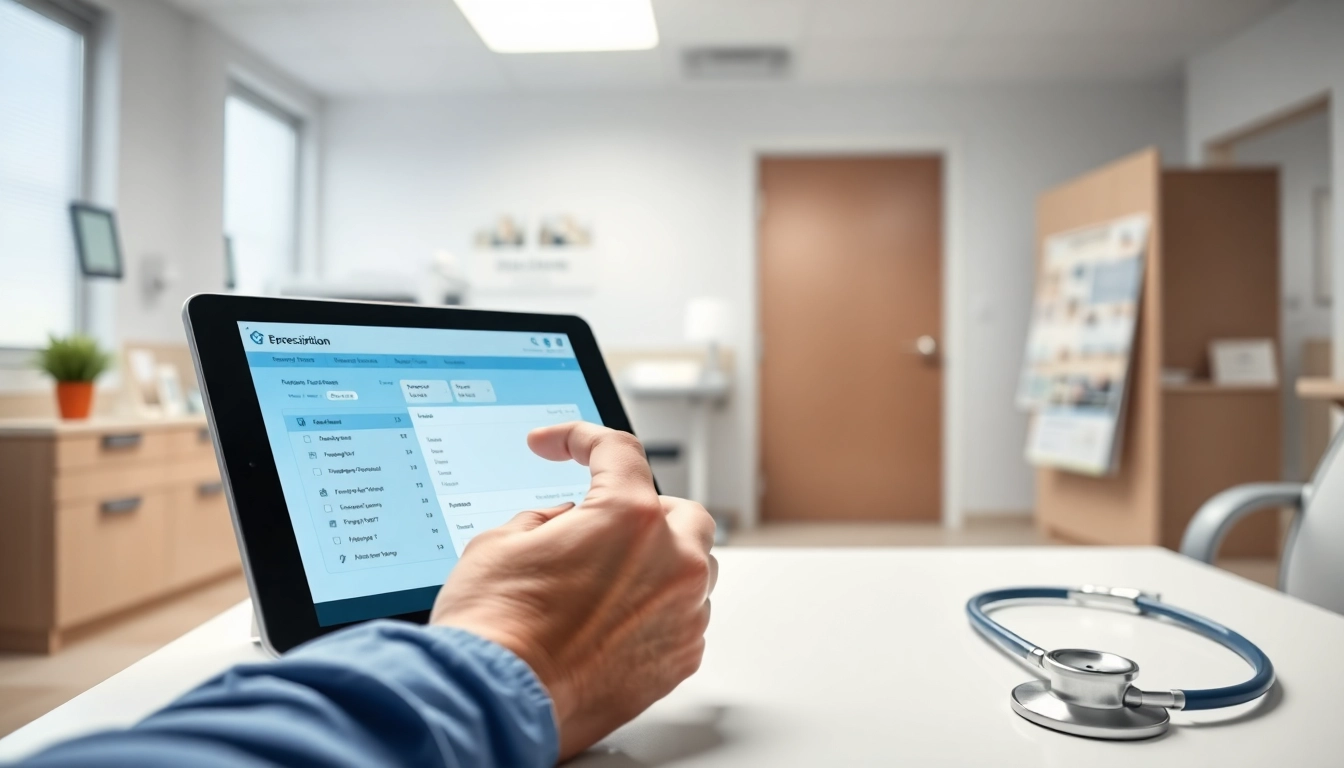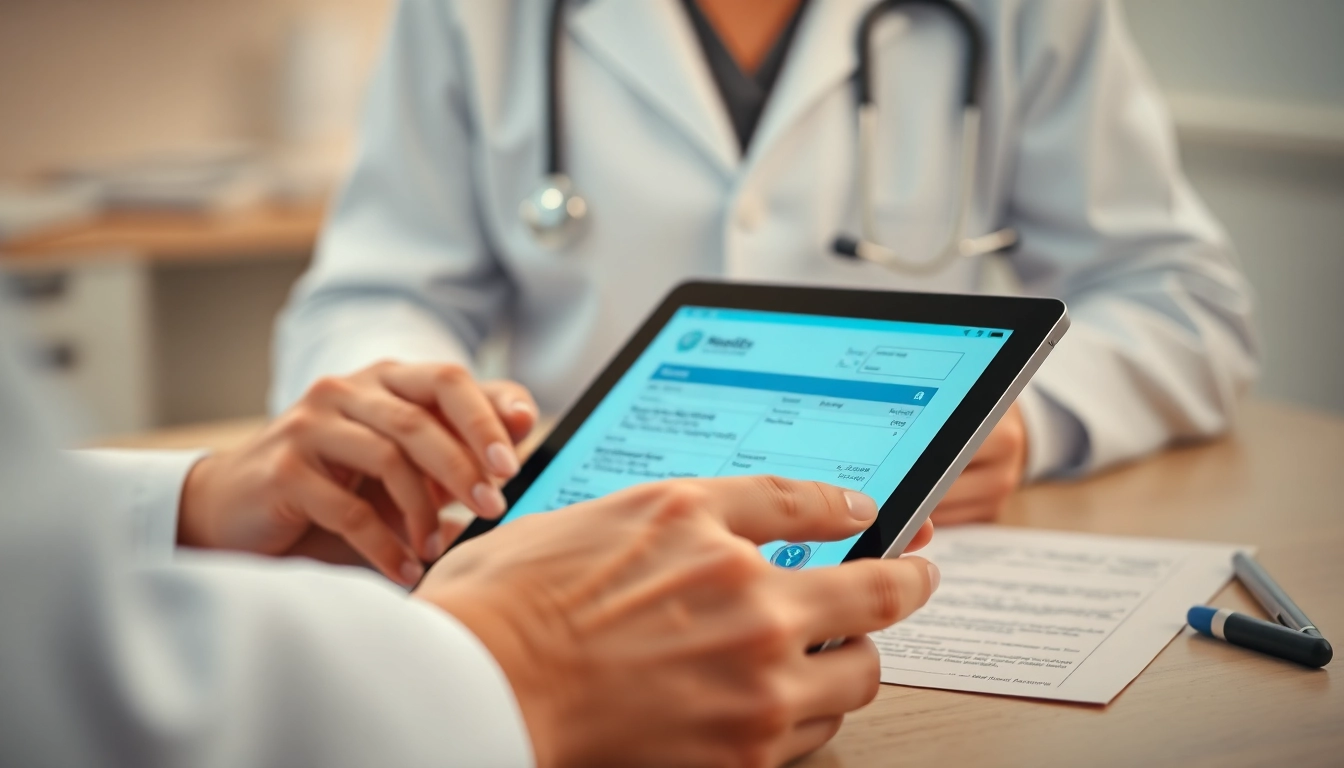Comprehensive Guide to Eprescription App Development: Features, Benefits, and Best Practices
Understanding Eprescription App Development
The healthcare industry is currently experiencing a shift towards digital solutions, and e-prescription app development stands at the forefront of this revolution. E-prescribing refers to the electronic transmission of prescriptions between healthcare providers and pharmacies, replacing the conventional paper-based methods. This change not only enhances efficiency in the prescribing process but also improves patient safety by reducing errors associated with handwritten prescriptions. For healthcare organizations exploring this technological evolution, understanding the nuances of eprescription app development becomes imperative.
What is Eprescription App Development?
Eprescription app development entails creating software applications that facilitate the electronic prescribing of medications. These applications integrate with existing healthcare systems to streamline the prescribing process, enabling physicians to send prescriptions electronically to pharmacies. Key aspects include database management, user interface design, and ensuring compliance with healthcare regulations such as HIPAA. Developers must consider not only the technical specifications but also user needs and healthcare dynamics when designing these applications.
The Importance of Eprescription in Modern Healthcare
The transition to e-prescribing is driven by numerous benefits. Firstly, e-prescriptions help reduce medication errors, which are a common occurrence with handwritten prescriptions. Electronic prescriptions also enable healthcare providers to access patients’ medication history, thus reducing the risk of adverse drug interactions. Furthermore, e-prescribing enhances efficiency by allowing for real-time management of prescriptions and immediate communication between providers and pharmacies. This is particularly critical in times of high patient influx or emergencies, where timely medication distribution is vital.
Key Features of Successful Eprescription Apps
To ensure the success of e-prescription apps, certain features are essential:
- User-friendly interface: The design must facilitate easy navigation for healthcare providers, ensuring they can quickly access the information they need.
- Integration capabilities: E-prescribing apps need to integrate seamlessly with Electronic Health Records (EHR) systems, pharmacy management software, and other relevant platforms.
- Security measures: Robust security protocols must be in place to protect sensitive patient data and comply with regulations.
- Real-time prescription tracking: Features that allow users to track a prescription’s status enhance transparency and communication between all parties involved.
Essential Components of Eprescription App Development
User Interface and User Experience (UI/UX) Design
The user interface (UI) and user experience (UX) are critical factors in the successful adoption of e-prescription applications. A well-designed interface focuses on functionality and usability, ensuring that healthcare professionals can use the app efficiently without a steep learning curve. To optimize the user experience, developers should conduct user testing sessions, gather feedback from healthcare providers, and iterate on the design based on findings. This process helps designers to create an intuitive layout that guides users through the e-prescribing workflow seamlessly.
Integration with Healthcare Systems
An e-prescription app should integrate with existing healthcare systems to facilitate data exchange and ensure comprehensive patient care. Integration allows physicians to access patient medication history, allergies, and prior prescriptions, enabling informed decision-making. Moreover, interoperability is crucial for ensuring that the e-prescribing system works seamlessly with various EHRs and pharmacy systems. Choosing the right set of APIs and ensuring adherence to industry standards can greatly enhance integration efforts.
Data Security and Compliance Standards
Given the sensitive nature of healthcare data, compliance with security regulations like HIPAA is non-negotiable for e-prescription app development. Developers must implement encryption protocols for data storage and transmission, conduct regular security audits, and develop comprehensive privacy policies. Additionally, measures must be taken to ensure that only authorized personnel can access patient-sensitive information. Robust logging and monitoring tools can help in maintaining transparency and identifying potential breaches before they escalate into significant threats.
Challenges in Eprescription App Development
Technical Challenges and Solutions
Developing an e-prescription app brings a set of technical challenges, ranging from system integration issues to data management complexities. One common issue is ensuring that the app functions properly across various devices and operating systems. Adopting responsive design principles can help address compatibility problems, allowing users on different platforms to access the app without losing functionality.
Additionally, data migration from legacy systems can pose a challenge. Implementing a detailed migration plan, backed by thorough testing and validation strategies, can ease this transition. Regular updates and maintenance of the app can prevent technical obsolescence, ensuring continued functionality and relevance.
Legal Considerations and Compliance Issues
Legal implications play a significant role in e-prescription app development. Compliance with regulations such as the Controlled Substances Act (CSA) and state-specific e-prescribing laws is essential. Failure to comply can lead to legal penalties and loss of trust among users. Developers should stay informed about changing regulations and work closely with legal experts to ensure that all aspects of the app conform to current laws. This includes understanding the requirements for electronic signatures and prescription authenticity.
Addressing User Adoption and Training
User adoption is a frequent hurdle in the implementation of new technologies. Healthcare professionals who are accustomed to traditional prescribing methods may resist transitioning to e-prescribing. To overcome this, comprehensive training programs tailored to different user groups can facilitate smoother transitions. Providing ongoing support, including help desks and user manuals, can further ease adoption and build confidence. Collecting user feedback regularly will allow for continuous improvements and refinements of the app.
Cost Factors in Eprescription App Development
Estimating Development Costs
The cost of developing an e-prescription app can vary significantly depending on various factors, including the app’s complexity, the desired features, and the technology stack used. Generally, budgeting for an e-prescription app involves considering both initial development costs and ongoing expenses for maintenance and support. Creating a detailed project plan that outlines all functionalities, design specifications, and expected timelines can provide a more accurate estimate of the total costs involved.
Managing Ongoing Maintenance Expenses
After the initial launch of the e-prescription app, ongoing maintenance is paramount to ensure the software continues to meet user needs and compliance requirements. This includes regular updates to fix bugs, introduce new features, and ensure security protocols are up to date. It’s wise to allocate a portion of the budget specifically for maintenance and support to avoid unexpected costs later. Developing a maintenance schedule can help manage these expenses effectively while ensuring the app remains functional and relevant.
Cost-Benefit Analysis of Implementing Eprescription Apps
Conducting a cost-benefit analysis helps healthcare organizations assess the financial implications of adopting e-prescription systems. This analysis should include both direct costs, such as development and maintenance, and indirect benefits like time savings, reduced medication errors, and improved patient satisfaction. Organizations can utilize metrics such as return on investment (ROI) and total cost of ownership (TCO) to measure the long-term financial impact effectively. Engaging stakeholders throughout this process can foster buy-in and support for the investment in e-prescription technology.
Future Trends in Eprescription App Development
Emerging Technologies and Innovations
The future of e-prescription app development is poised for exciting innovations. Advancements in artificial intelligence (AI) and machine learning (ML) are expected to enhance the predictive capabilities of e-prescription systems. These technologies can analyze patient data to suggest optimal medications based on individual health conditions and histories. Additionally, the use of blockchain technology might improve the traceability and security of prescription records, paving the way for enhanced patient trust and system integrity.
Market Trends Shaping Eprescription Solutions
The demand for telehealth services is influencing the evolution of e-prescription solutions. As more healthcare providers turn to remote consultations, the need for integrated e-prescribing features that support virtual visits grows. Future e-prescription systems will likely incorporate functionalities that facilitate seamless transitions between telehealth consultations and medication management. Understanding market dynamics and patient preferences can guide the development of features that resonate with users and enhance the overall experience.
Impact of Telehealth on Eprescription Development
The rise of telehealth services has fundamentally altered patient interactions with healthcare providers, necessitating new approaches to e-prescription app development. Patients engaging in virtual consultations require streamlined processes for receiving electronic prescriptions promptly. As telehealth platforms expand, they will increasingly integrate e-prescribing functionalities, enabling patients to manage their prescriptions more efficiently from the comfort of their homes. This alignment between telehealth and e-prescribing will be crucial for future-proofing healthcare solutions and improving overall patient care.














Post Comment